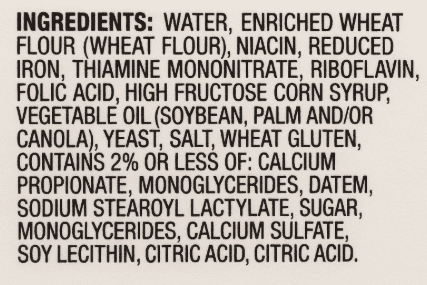Summary
This article teaches readers how to decode food ingredient labels to make smarter nutritional choices, especially for those managing diabetes or kidney health. It explains that ingredients are listed by weight and breaks down key categories like preservatives, sweeteners, oils, and flavorings, highlighting potentially harmful additives such as phosphoric acid, high-fructose corn syrup, and trans fats. It stresses the importance of spotting hidden sugars and additives that can spike blood glucose or strain the kidneys, and offers practical tips like checking for “no added sugar” and using apps to simplify label reading.
The Basics: What Ingredients Really Mean
Ingredient lists aren’t random; they’re organized by weight, meaning the first ingredient makes up the largest portion of the product.
Here’s a closer look at what different categories often contain:
Additives & Preservatives
These are the hidden helpers that extend shelf life or improve texture. But they can also pack a punch you don’t want:
- Sodium benzoate and potassium sorbate are common preservatives. While generally safe, their sodium and potassium content can be problematic in high amounts for those with kidney concerns.
- Phosphoric acid is a big one to watch. It’s often used in sodas and processed foods and can significantly elevate phosphorus levels, which puts extra stress on your kidneys.
Sweeteners
Beyond the obvious sugar, many products hide sweeteners that can impact blood sugar or even cause digestive upset:
- High-fructose corn syrup, cane sugar, and maltodextrin are rapid-acting sugars that can quickly spike glucose levels.
- Sucralose, aspartame, and stevia are artificial or plant-based sweeteners. They might be better for blood sugar management than traditional sugar, but moderation is still key.
Oils & Fats
Not all fats are created equal, and some can be detrimental to your health:
- Partially hydrogenated oils are a definite no-go. These contain trans fats, which are linked to various health issues.
- Palm oil and soybean oil are frequently used in processed foods and are often heavily refined.
Flavorings & Colorings
These are added to make food look and taste more appealing:
- Artificial colors like Red 40 or Yellow 5 don’t have a direct link to kidney or diabetic complications, but their presence often signals a highly processed food item.
- “Natural flavors” is a broad term that can mask anything from MSG (monosodium glutamate) to other additives.
Decoding for Diabetes: Red Flags to Watch For
If you’re managing diabetes, your primary goal is to minimize drastic blood sugar fluctuations. Keep an eye out for these culprits:
- Ingredients ending in “-ose”: Think glucose, fructose, dextrose. These are simple sugars that quickly raise blood glucose.
- Sugar alcohols: While sorbitol and xylitol have a lower impact on blood sugar, consuming too much can lead to bloating or diarrhea.
- Hidden sugars: Even seemingly healthy options can contain fruit juice concentrates or various syrups, which act like sugar in your body.
Quick Tip: Generally, the fewer ingredients on the list, the better. Whole, unprocessed foods naturally have shorter, more understandable ingredient lists.
Protecting Your Kidneys: Key Ingredients to Avoid
For individuals focused on kidney health, especially post-transplant or with reduced kidney function, certain ingredients are particularly important to monitor:
- Phosphorus additives: Scan for any word containing “phos,” such as sodium phosphate or dicalcium phosphate. These artificial phosphorus additives are easily absorbed and can dangerously raise phosphorus levels in your blood.
- Sodium: Aim for less than 140 mg per serving. Also, be aware of ingredients like monosodium glutamate (MSG) or disodium inosinate, which contribute significantly to sodium intake.
- Potassium-based additives: Ingredients like potassium chloride and potassium phosphate can cause dangerous spikes in potassium, which can be critical for kidney patients.
Important Note: Just because a product is labeled “low sodium” doesn’t automatically make it kidney-safe. Always scrutinize the complete ingredient list!
Smart Hacks for Savvy Label Reading
Become a label-reading pro with these practical tips:
- Actively look for labels that explicitly state “no added sugar,” “low sodium,” and “phosphorus-free.”
- Always check both the Nutrition Facts panel and the ingredient list. They provide different, but equally crucial, pieces of the puzzle.
- Consider using dedicated apps like KidneyRD or SugarWise. They can often scan barcodes and provide instant feedback on whether a product aligns with your dietary needs.
Final Thoughts: Your Nutritional Compass
Mastering the art of reading ingredient labels is truly like getting a VIP pass to understanding your health. Whether you’re dedicated to maintaining steady glucose levels or diligently guarding against kidney strain, these small details hold immense power. Trust your intuition, prioritize whole foods whenever possible, and let food labels be your trusted guide on your health journey.
